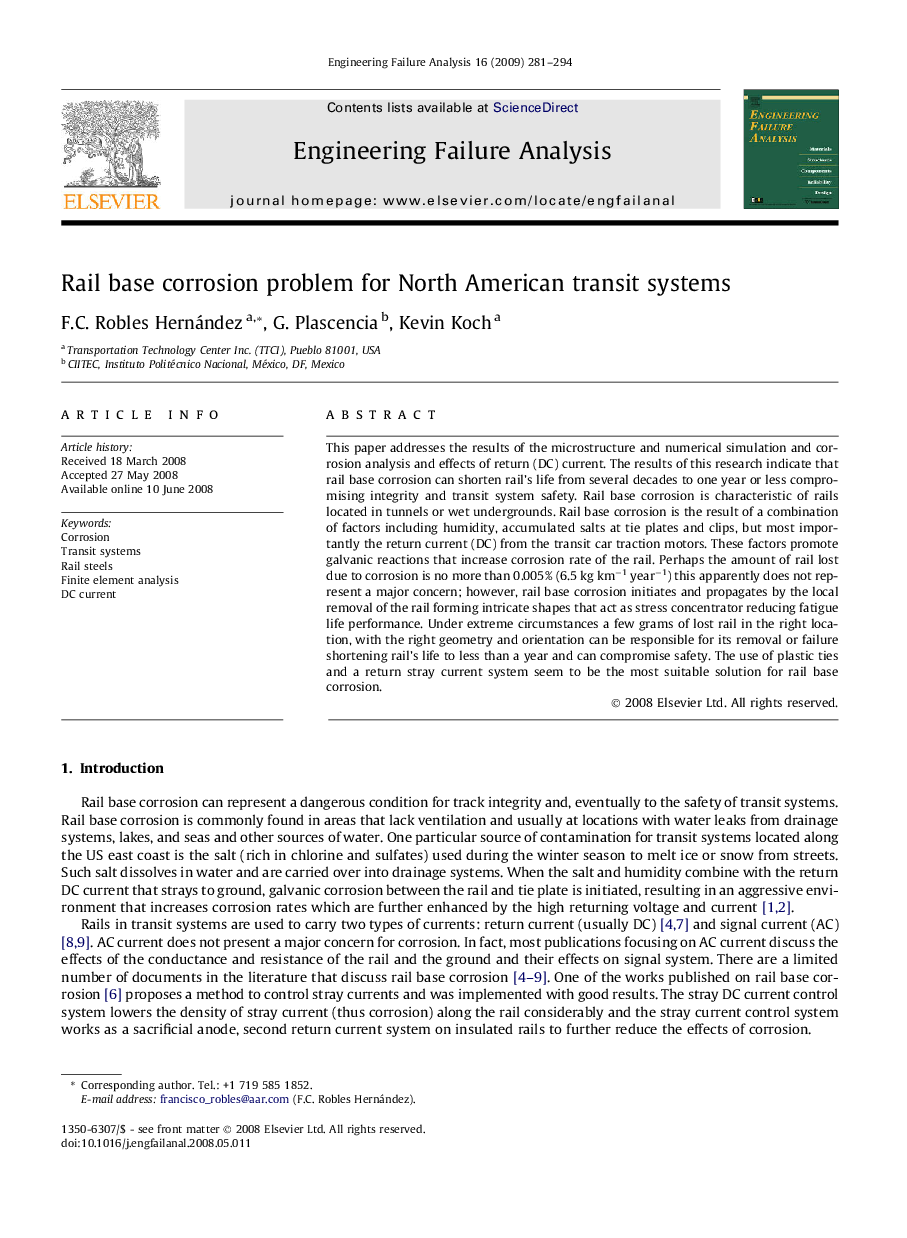| Article ID | Journal | Published Year | Pages | File Type |
|---|---|---|---|---|
| 770053 | Engineering Failure Analysis | 2009 | 14 Pages |
This paper addresses the results of the microstructure and numerical simulation and corrosion analysis and effects of return (DC) current. The results of this research indicate that rail base corrosion can shorten rail’s life from several decades to one year or less compromising integrity and transit system safety. Rail base corrosion is characteristic of rails located in tunnels or wet undergrounds. Rail base corrosion is the result of a combination of factors including humidity, accumulated salts at tie plates and clips, but most importantly the return current (DC) from the transit car traction motors. These factors promote galvanic reactions that increase corrosion rate of the rail. Perhaps the amount of rail lost due to corrosion is no more than 0.005% (6.5 kg km−1 year−1) this apparently does not represent a major concern; however, rail base corrosion initiates and propagates by the local removal of the rail forming intricate shapes that act as stress concentrator reducing fatigue life performance. Under extreme circumstances a few grams of lost rail in the right location, with the right geometry and orientation can be responsible for its removal or failure shortening rail’s life to less than a year and can compromise safety. The use of plastic ties and a return stray current system seem to be the most suitable solution for rail base corrosion.
